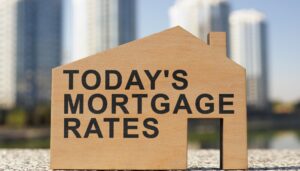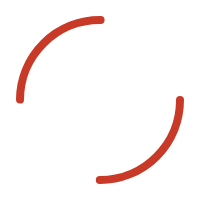Today, January 2, 2026, mortgage rates hover around their lowest point of the past year, presenting a significant opportunity for both prospective homeowners and those looking to refinance. It feels like just yesterday we were all talking about how high mortgage rates had climbed, making the dream of homeownership feel further out of reach for so many. The housing market felt like a game of musical chairs where the music had stopped, and the number of chairs had drastically decreased.
Today’s Mortgage Rates, Jan 2: 30-Year Fixed at 6.16% Offers Hope for Buyers in 2026
But as we step into the new year, there’s a palpable shift in the air, and it’s bringing some much-needed optimism to the housing sector. According to Zillow's latest data, the national average for a 30-year fixed mortgage rate is sitting at a cool 6.16% as of January 2, 2026. This is a welcome drop from the peaks we saw just a year ago, and frankly, it feels like a breath of fresh air.
I’ve been following the mortgage market for years, and this kind of movement is exciting. It wasn't so long ago, in early 2025, when we were regularly seeing rates well above 7%. That kind of rate makes a big impact on a monthly payment, and it really puts the brakes on buyer activity. Now, with rates dipping back into the low 6% range, the equation for affordability is starting to balance out again. This isn't just a small dip; it's a significant improvement that could unlock the door for a lot of people.
What’s Behind This Welcome Decline?
So, what’s causing these rates to soften? It’s not just one thing, but rather a few key economic factors working together. Think of it like a recipe where several ingredients come together to create a desirable outcome.
- Inflation is Finally Playing Ball: For a while there, inflation was the stubborn guest at the economic party who just wouldn’t leave. But it seems the Federal Reserve’s efforts to control it are finally paying off. We’re seeing core inflation moderate, which is fantastic news. When inflation cools down, it gives the Fed more room to consider easing up on interest rates, and that directly influences mortgage rates. It’s a clear sign that the aggressive measures taken over the past couple of years might be doing their job.
- Treasury Yields are Taking a Breather: Mortgage rates have a very close relationship with the 10-year Treasury yield. When investors feel a bit nervous about the global economy or are looking for safer places to park their money, they often flock to bonds, which pushes yields down. We're seeing a bit of that “risk-off” sentiment combined with some steadier domestic economic news, which has helped to soften bond yields. And what’s good for bond yields is generally good for mortgage rates.
- The Housing Market is Catching Its Breath: Let's be honest, the housing market has been on a wild ride. After years of intense competition and rapidly rising prices, buyer demand has naturally pulled back. This means homes are staying on the market a bit longer in some areas, and we're seeing modest price adjustments. Lenders are keen to keep the wheels of the housing market turning, so they’re getting more competitive, which can translate into better rates for us. It’s a bit of a balancing act, and right now, it’s tipping in favor of the buyer.
What Today's Mortgage Rates Mean for You
This is where things get really interesting because these numbers have tangible effects on your wallet. Whether you're looking to buy your first home or refinance an existing mortgage, these lower rates create new possibilities.
Here’s a snapshot of what Zillow is reporting for current mortgage rates as of January 2, 2026:
| Loan Type | Average Rate |
|---|---|
| 30-year fixed | 6.16% |
| 20-year fixed | 5.93% |
| 15-year fixed | 5.42% |
| 5/1 ARM | 6.26% |
| 7/1 ARM | 6.14% |
| 30-year VA | 5.58% |
| 15-year VA | 5.08% |
| 5/1 VA | 5.24% |
And for those thinking about refinancing, the rates are looking pretty appealing too:
| Loan Type | Average Refinance Rate |
|---|---|
| 30-year fixed | 6.18% |
| 20-year fixed | 5.83% |
| 15-year fixed | 5.53% |
| 5/1 ARM | 6.24% |
| 7/1 ARM | 6.50% |
| 30-year VA | 5.44% |
| 15-year VA | 5.19% |
| 5/1 VA | 5.27% |
To give you some perspective, let's talk numbers. Imagine you're taking out a $400,000 loan with a 30-year fixed rate of 6.16%. Your monthly principal and interest payment would be around $2,437. Now, compare that to a year ago, when that same loan at 7.00% would have cost you roughly $2,661 per month. That’s a difference of over $220 per month, which adds up to nearly $2,700 in savings annually. That’s a pretty significant chunk of change that could go towards… well, almost anything!
And for our veterans and military families, the savings are even more compelling. VA loans are often showing rates significantly lower than conventional loans, thanks to the government backing that reduces risk for lenders. On a 30-year term, the savings can be substantial, making homeownership even more accessible.
Refinance: Is It Time to Make the Jump?
The fact that refinance rates are so close to purchase rates signals that lenders are becoming more willing to offer these deals. While folks looking to tap into equity with a cash-out refinance might still need to be a bit strategic, those looking for a straightforward rate-and-term refinance could find this a prime opportunity. If you locked in a mortgage in 2022, 2023, or even early 2025 at a rate above, say, 6.5%, and you can now refinance into something closer to 6.18%, you could be looking at real, tangible savings. Especially if you can manage the closing costs or have them rolled into the loan.
However, I always advise a dose of caution. Here are a few things to keep in mind:
- Home Values: While prices aren't skyrocketing everywhere anymore, they have plateaued or even slightly decreased in some areas. This can affect your loan-to-value (LTV) ratio, which lenders look at closely.
- Credit Standards: While we're seeing better rates, the credit standards aren't quite as loose as they were before 2022. So, having a solid credit score is still important.
- ARMs vs. Fixed: Adjustable-rate mortgages (ARMs), like the 5/1 at 6.26% or 7/1 at 6.14%, are less appealing right now than they might have been in the past. The difference between an ARM's initial rate and a 30-year fixed rate isn't as dramatic as it used to be. These can be a good option if you're absolutely certain you'll sell or refinance before the rate starts adjusting, but it's a gamble.
Looking Down the Road: What to Expect
The general consensus among economists is that the Federal Reserve will likely begin cutting its benchmark interest rate sometime in the middle to late part of 2026. If this happens, it's reasonable to expect mortgage rates to drift even lower, perhaps into the high 5% range by the end of the year. Of course, all of this hinges on the inflation situation and what's happening with jobs.
But here's my personal take: waiting for the “perfect” bottom is a bit like chasing a unicorn. The best time to make a move is when the rates align with your personal financial goals and comfort level. We've seen rates drop nearly a full percentage point from their 2025 highs, and that's a significant opening. The affordability window is wider than it's been in a long time, and if you've been on the fence, this could be your moment.
A Financial Overview to Digest
- Current Averages: As of January 2, 2026, the national average for a 30-year fixed mortgage rate is around 6.20%, with the 15-year fixed rate hovering at 5.44%. Refinance rates are just a hair higher.
- Recent Trends: We’ve seen a steady decline in rates, hitting their lowest point for 2025 near the end of the year. This is a welcome change from the near-7% rates that were common earlier in 2025.
- Key Drivers: Remember, mortgage rates are primarily tied to the 10-year Treasury yield, inflation, and the overall health of the economy, not directly to the Fed's main interest rate.
- Expert Predictions: Most forecasters anticipate rates will stay in the low 6% range for the early part of 2026. Some, like Fannie Mae, are predicting a dip below 6% by year-end, while others, like the Mortgage Bankers Association, see them holding around 6.4%.
Key Insights to Guide You
- Inflation & Economy: The slowing of inflation and a more stable labor market are the big wins here, pushing down mortgage rates. However, strong economic reports, like the robust 4.3% GDP growth in Q3 2025, can sometimes cause rates to jump up as investors shift their money.
- Fed Policy: The Fed's three rate cuts in late 2025 are a contributing factor, but the market reaction has been measured. It's highly unlikely we'll see a return to the record-low rates of the pandemic era anytime soon.
- For Buyers: Shop around! This is my golden rule. Every lender is different, and the rate you get can vary significantly. Don't be afraid to ask for quotes from multiple lenders. When you're ready to apply, get a personalized quote.
Final Thoughts
The start of 2026 feels like a moment where many things are lining up favorably for housing. We have lower rates, more stable home prices, and thankfully, less of that frantic competition we saw for so long. For those first-time buyers who were priced out in 2024 and 2025, this could be the perfect moment to re-enter the market. And for current homeowners, it’s a chance to either lock in some significant savings through a refinance or upgrade your home without breaking the bank.
While the sub-3% era of 2020-2021 is likely behind us, a rate of 6.16% is definitely something to pay attention to. It’s a compelling number, and for many, it’s a sign that now might be a very good time to act.
VS
Two solid options: Alabama’s affordable new build with steady returns vs Tennessee’s larger home with higher cash flow. Which fits YOUR investment strategy?
📈 Choose Your Winner & Contact Us Today!
Talk to a Norada investment counselor (No Obligation):
(800) 611-3060
Invest in Fully Managed Rentals for Smarter Wealth Building
With mortgage rates dipping to their lowest levels in months, savvy investors are seizing the opportunity to lock in financing.
Norada Real Estate helps you seize this rare opportunity with turnkey rental properties in strong markets—so you can build passive income while borrowing costs remain historically low.
🔥 HOT NEW LISTINGS JUST ADDED! 🔥
Talk to a Norada investment counselor today (No Obligation):
(800) 611-3060
Also Read:
- Mortgage Rates Predictions Backed by 7 Leading Experts: 2025–2026
- Mortgage Rate Predictions for the Next 3 Years: 2026, 2027, 2028
- 30-Year Fixed Mortgage Rate Forecast for the Next 5 Years
- 15-Year Fixed Mortgage Rate Predictions for Next 5 Years: 2025-2029
- Will Mortgage Rates Ever Be 3% Again in the Future?
- Mortgage Rates Predictions for Next 2 Years
- Mortgage Rate Predictions for Next 5 Years
- Mortgage Rate Predictions: Why 2% and 3% Rates are Out of Reach
- How Lower Mortgage Rates Can Save You Thousands?
- How to Get a Low Mortgage Interest Rate?
- Will Mortgage Rates Ever Be 4% Again?








